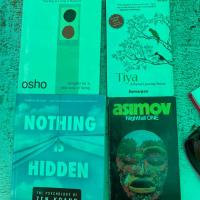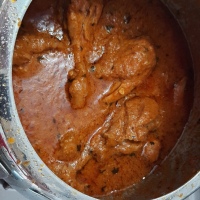In no particular order these are some points about Jaipur anybody would consider as the Jewels in the Crown of Jaipur.
Everybody has to eat something some time. So let us list salient points related to food about Jaipur.
Jaipur is part of the desert state of Rajasthan & lack of adequate rainfall & transport saw to it that people ate ‘ana se ana’ as vegetables were scarce. Also because of the heat and the hard work the people put in the fields red chilies & Desi Ghee were used in abundance.
The delicacies one would consider as Jewels in the Crown of Jaipur would be
- Gatte Ki Sabzi – A veg. curry made with gram flour dumplings
- Ker Sangari- A veg curry made with fruit of Khejari tree & a berry.
- Ker ka Aachar- An aachar made with a berry which grows in the wild.
- Piyaz Ki Kachori – A Kachori made with a filling of onions & potatoes.
- Mirchi Bare- Pakora made out of green chilie & allo based filling & gram flour.
- Pheeni- can be had as a dessert or at breakfast with milk.
- Gazak – Sweet made of Til & sugar or Gur
- Mishri Mawa- Mawa based sweet
- Mawa ki Kachori – a Kachori with mawa filling served with sugar syrup
- Omlete by Sanjay
- Khatto – A curry made with gram flour boiled in buttermilk.
- Paneer ki Sabzee & Bejar Ki Roti with rabri as dessert at Mahaveer Rabri Bhandar
- Kulfi- traditional Ice Cream
- Namkeens from the Sonthliwalon Ka Rasta
- Choorma Daal Baati- It has to be tasted to be defined!
- Raabri- A little atta cooked in boiling Chach.
- A meal at Chokhi Dhani Ethnic Village
- Rajasthani Thali at Natraj, LMB
- Heeng ki kachori -Kachories made of asfoetida flavored masala.
- Heeng ki sev- Sev made of asfoetida flavored gram flour.
- Doodh Jalebi at Breakfast
- Meethi Lassi on M.I. Road
- Ghewar, a sweet, from LMB
- Gulab Sakri Mawa based sweet flavored with kesar
- Kangan – traditional sweet made more or less like a Jalebi
- A late night snack at the Saras Snack counter on JLN Marg
- Laal Maans – Mutton in red curry
- Safed Maans- Mutton in white gravy
- Paan – chewing betel leaf with slaked lime, Kattha & Supari.
- Jalebi made in Desi Ghee
- Mutton Sule- Marinated boneless mutton cooked on coals
- Shammi Kabab- Minced meat tikiya cooked on a tawa or deep fried in oil.
- Mangori Curry- Lentil paste dried in small pieces and later on cooked as a curry.
As Rajasthan is a border state & the Princes in The Rajputana were at war more than they were at peace so you will find Forts & Palaces in which ever part of Rajasthan you might venture. But the monuments of Jaipur are special as they are not only in good condition but the administration takes pains to keep them in pristine condition.
- Amber Fort- Built in the 16th century on a hillock it is a majestic Fort.
- The Palaces at The Amber Fort are amazing.
- The imposing & artistic entrance to the Palaces of the Amber Fort.
- Elephant ride at up the Amber Fort Hillock
- Jaigarh Fort about 15km from Jaipur is located on a hill known as Cheel ka Teela & was built in the 16th century by Raja Man Singh & Sawai Jai singh II.
- Jaibaan was built in 1720 and is said to be the biggest cannon on wheels in the world.
- Cannon Foundry at Jaigarh- Jaibaan was cast here.
- Water Tanks at the Jaigarh Fort- Still in use these tanks can store 60,00,000 liters of fresh rain water. Find out about the system thru which they collected this huge amount of water.
- Nahargarh Fort was used for the guests of the Maharajas.
- Stepwell at the Nahargarh Fort- This step-well was made famous by the film Rang De Basanti.
- Man Sagar Lake This Lake is sustained by recycled water & a popular spot for birding. A birding fair is held here, every year.
- Jal Mahal Palace- Recently restored to its former glory this palace is in the middle of the Man Sagar Lake.
- Sisodia Raani ka Baagh- Built in 1728 by Sawai Jai Singh for his Sisodia Queen, it is a terraced garden.
- Galta Ji- A pilgrimage site it was built by Rao Kriparam, the Sun is worshipped here.
- Vidhyadhar ji Ka Baagh- This garden is named for the Architect Vidyadhar Bhattacharya who designed the city of Jaipur.
- Kanak Vridavan Garden- Near the Man Sagar Lake this garden was the adobe of Govind Dev ji before the idol was moved to the City Palace Complex.
- Kos Minar at the VT Road circle was a pillar situated by the roadside, it was used to measure distances in the Mughal times.
- Peacock Garden- On the JLN Marg near the RCDF offices this garden was decorated with sandstone chatris & fiber Peacocks made by an eminent artist.
- Central Park is a most popular place for a morning walk, a date or for birding.
- French Sculptures in the Central Park & the Man Sagar Lake- Made by a French artist these sculptures are a thing of beauty.
- Isar Laat was constructed to celebrate the victory of the Jaipur forces under Sawai Ishwari Singh Ji in 1749.
- Jantar Mantar– An astronomical observatory having with huge Sundials etc made out of marble & masonry.
- City Palace-Residence of the ruling family of Jaipur. Some parts are open to public & some parts have been made into museums.
- Hawa Mahal Palace- Built in 1799 by Sawai Pratap Singh ji for the royal women to watch the religious processions etc. & still be in purdha.
- The façade of Hawamahal- It has 5 stories & 953 windows & is painted terracotta pink.
- The various gates of the walled city- As Jaipur was built according to Vastu Shastra it had 9 gates.
- Maharanion ki chatriyans- This is the funeral grounds of the Maharanis of Jaipur.
- Gaitore- Cenotaphs of the past Maharajas are here.
- Sawai Jai Singh Statue Circle- Almost all circles of Jaipur have statues installed on them but only one circle is known popularly as The Statue Circle. A statue of Sawai Jai Singh stand tall here.
- Birla Planetarium-Plan a visit to be updated about the universe.
- Conference venue at the Birla Institute of Scientific Research (BISR)
- Rambagh Palace Hotel- One of the best hotels in the world today.
- Silver urns- Huge utensils cast in silver used to ferry Gangajal to UK for the use of Sawai Madho Singh II.
- Light & Sound Show at Amber Fort
- Light & Sound Show at Amar Jawan Jyoti in remembrance of Kargil War Martyrs.
- The pillarless hall at the Govind Dev ji Temple is Jaipur’s contribution to the Guinness Book of World records. It is the world’s widest RCC flat roof construction with a single span of 119 feet.
- Rajmandir-A single screen theatre, offering bollywood song & dance movies.
- Science Park in Shastri Nagar. A huge statue of a T-Rex roars here.
- National Flag In The Central Park
There are so many ancient Temples in Jaipur that it is also called Choti Kaashi.
- Thikana Govind Dev ji – The rulers of Jaipur claimed to be His Deewans & ruled in his name.
- Shilla Mata in the Amber Fort. It has doors made of silver with 9 roops of Goddess Durga & 10 roops of Goddess Saraswati engraved on it.
- Laxmi Narayan Temple- A poetry in white marble made by the Birlas.
- Ganesh Temple, Moti Doongri, Jaipur ke pratham poojya!
- Hanuman Temple, Moti Doongri, Another ancient temple
- Kala Hanuman Temple near the old Ram Prakash Cinema Hall.
- Garh Ganesh on a hill near Gaitore
- Nahar ke Ganesh ji- This Temple is about 175 years old.
- Jagat Shiromani Temple-Dedicated to the Lord Krishna His likeness in a black stone idol is worshipped here.
- Akshardham Temple-Located in Vaishali Nagar this temple is dedicated to the 18th century saint Swaminarayana.
- Ram Krishna Mission is in the C-scheme colony.
- Sanghi ji Jain Temple-A 1000 year old Digambar Jain temple at Sanganer.
- Choolgiri near Jaipur on a hillock is a Jain Temple.
- Padampura Jain Temple is about 30 km from Jaipur on the Tonk road.
Clubs of Jaipur-These are the best options for eating, drinking, staying, exercising or meeting people of Jaipur. They have rules about allowing non-members to use their facilities.
- Jaipur Club on Jacob Road
- Ashok Club on Janpath
- Polo Club on Bhawani Singh Road
- Golf Club on Bhawani Singh Road.
It does not matter if you like festivals to disrupt the hum-drum day to day rhythm of life or not they do leave you rejuvenated by their mere presence. These are some of the important festivals celebrated in Jaipur.
- Deepawali- The festival of lights is celebrated with much gusto in Jaipur. The whole city is bathed in colored lights to welcome the Goddess Laxmi.
- Makkar Sakranti – A day for giving. The young guns of Jaipur fly kites, this day.
- Holi-Is the Festival of colors.
- Elephant Festival around Holi- If you wish to see this huge animal in huge numbers in one place all beautified for the day, this festival is for you!
- Gangaur – is a widely celebrated festival of Rajasthan where, Gauri, symbolizing Parvati, the consort of Lord Shiv, is worshipped as a symbol of virtue & fidelity. A big procession is taken out from the City Palace on 2 days.
- Teej-The festival is celebrated to pray to goddess Parvati for a happy married life, well-being of husband and children. A procession is taken out from the City Palace.
Excursions
- Samode is about 42 km from Jaipur Samode Palace is used as a heritage hotel & charges an entry fee for non residents to view the Sheesh Mahal & Darbar hall.
- Abhaneri- About 95 km from Jaipur off Jaipur-Agra Highway it is a huge stepwell in the shape of an inverted Pyramid.
- Bhangarh– Ruins of an ancient town said to be haunted .It is off Jaipur Agra highway.
- Tonk- About 110km from Jaipur it is also known as the ‘Lucknow of Rajasthan’. Sunehri Kothi is a must visit place. It is famous for Namdahs.
- Sambhar-About 65km from Jaipur it has the biggest salt lake in India. It is also a birders paradise around monsoons.
- Bharatpur-About 175km from Jaipur. It has a rich bird life for the Nature Lover and The Lohagarh Fort for the history buff.
- Ajmer- About 135 km from Jaipur. Holiest Muslim shrines of the world, Dargah Sharif is located here.
- Pushkar– is about 145 km from Jaipur & is famous for the Brahma Temple and the Savitri Temple, Sarovar & the yearly Camel Fair.
- Pachewar-About 90km from Jaipur it has a 300 year old fort which has been coverted into a heritage hotel.
- Sariska Tiger Reserve– About 107km from Jaipur this National Park is spread over 866 sq km.
- Bairath or Viratnagar – About 86km from Jaipur. This town has been around since the times of Mahabharat. It was also a flourishing Buddhist centre during the reign of King Ashok.
- Seel Maata ki Doongri- 35km from Jaipur near Chaksu. This temple is dedicated the the goddess of small pox. Sheetala Ashtami is her day.
- Ranthambore- About 180km from Jaipur. This National Park has a rich natural life to be observed by the Nature Lover besides the Tiger.
- Alwar-About 150km from Jaipur. Famous for its monuments & Alwar Ka Mawa.
- Siliser-About 110 km from Jaipur near Alwar & Sariska. There is a palace hotel in the middle of the lake.
- Shekhawati- Encompasses the Districts of Jhunjhunu & Sikar.It is most famous for frescos painted on Havelies.
- Mehndipur Balaji off Jaipur-Agra Highway. The deity here is famous for exorcising evil spirits from a person.
Personalities
1. Sawai Jai Singh Ji II (1688-1743) A keen Astronomer he made the Jantar Mantars of Jaipur, Delhi etc and also founded the city of Jaipur.
2. Rajmata Gayatri Devi( 1919-2009) Voted as one of the World’s 10 most beautiful women by Vogue she was also an educationist & a philanthropist. She founded MGD School for girls & Sawai Man Singh Vidyalaya. She also revived the art of Blue pottery.
3.Pt. Vishwa Mohan Bhatt- Born in 1952 he won the Grammy award in 1994 & the Padam Shree in 2002 for taking Indian classical music to new heights.
Shopping
- Silk/Woolen Carpets, Rugs & Durries made in Jaipur are world famous.
- Mojari-Traditional leather shoes.
- Lac Work – Bangles made of lac are a must for any auspicious occasion.
- Laheriya- A saree dyed in diagonal stripes of different pastel colors usually worn during the monsoons.
- Bandhej is the process of tying & dying a saree etc.
- Thewa-This process of fusing 23 carat gold with colored glass was developed about 350 years ago in Pratapgarh, Rajasthan.
- Jewelry made with silver has much favour with the rural folk.
- Kundan- is the process of inserting gold foil between the stones and its mount, commonly used to make necklaces, believed to have originated in Rajasthan and Gujarat. It is the oldest method of making 24 carat gold jewelry in India.
- Meenakari is the art of fusing metal like gold, silver or copper with different lacquers of colors like blue, red or green.
- Miniature Paintings are a fine rendering in water color of the court life etc over the years.
- Brass decorative items are a must buy on a Jaipur visit.
- Hand made paper of Sanganer– Paper made out of waste materials. One brand even adds a ratio of elephant dung to the formula. A variety of paper is made of Akda plant, commonly found in Rajasthan growing by the roadsides.
- Jaipur Blue or Blue pottery a collectors item.
- Jaipuri Razaai-A sheer delight to use, made according to a centuries old formula, a must buy on Jaipur visit.
- Bagru Hand Block Printed clothes & furnishings
- Sanganeri Hand Block Printed clothes & furnishings
- Turbans-Headgear of men in Rajasthan. Every region had its own style of tying a turban. They were made of different colorful materials & designs all with its own significance.
- Heritage Liquor- Traditional liquor made by Ganganagar Sugar Mills as per recipes provided by the former Royal houses.
- Itra- locally made traditional perfumes
- Supari/Churan- A huge variety can be found at Link Road near Sarawagi Mansion.
- Gota- Lace made of metal or plastic used to trim traditional clothes of women.
- Batik print- A variation of Bandhej tie & dye process.
- Terracotta stuff- The best terracotta articles come from Baswa village.
Miscellaneous
- Jaipur Bus – A fleet of Lo-Floor Buses are plying the streets the city every day & connecting the far flung areas of Jaipur.
- Musical Fountain, Jawahar Circle, JLN Marg performs everyday from 7-7.30 pm in winters. They even show music videos on a wall of spray.
- Sanganer Airport – Recently renovated one of the top air-ports of India.
- Akshay Paatra- Providing free mid-day meals to the school going children.
- Gaalibaazi- An irreverent Kavi Sammelan at Holi, a tradition almost as old as the city.
- Hella Khayal Sangeet Dangal have been held in Lalsot on the 2nd day of Gangaur for more than 257 years now. Through this platform the artists inform the public about current affairs and issues, put forth problems to government officers, or comment on social, political and economic issues.
- Jaipuri Weddings– you have got to attend one to know the difference.
- Sculptures at the Circles– part of the drive to beautify Jaipur, this is priceless art commissioned for the city of Jaipur.
- Mandana-are the rangoli done in white & red colored lime on the floor & walls of a house on an auspicious occasion to welcome the gods.
- Bandarwal- door hangings tied at the entrance of a house on an auspicious occasion.
- Shorgar-They make traditional crackers by hand in earthen pots to be used at weddings etc.
- Neelgar- They dye clothes.
- Mehendi is used in all important occasions in life. A woman’s Shringar is incomplete without some mehndi on her hands & feet.
Educational Institutions
- St. Xavier’s School on Bhagwan Das Road
- MGD Girls School, off M.I. Road.
- St. Xavier’s College in C-Scheme.
- Rajasthan University on JLN Marg
- Rajasthan School of Art in Kishan pole Bazaar.
Music
- Maand-The local singers sung praises of the Rajput folk heros like Tejaji, Gogaji and Ramdeoji in this style of folk singing.
- Pabu ji ki Phad-The heroic stories of the folk hero Pabuji sung as folk songs.
- Kathputli- Folk songs which accompany the antics of the puppets on stage.
- Ravanhattha is a two-string stick fiddle used by bhopa community to narrate the epic tales of Pabuji.
- Panihari- songs sung by the local women, narrating the scarcity of water etc.
Dance
- Ghoomar – A dance performed mostly by Rajput women in groups or singly.
- Kaalbelia- Dance done by the snake charmer community.
- Therah Taali- This dance is performed in praise of folk-deity Baba Ramdeo by the Kamad community of Pokaran & Deedwana.
- Kacchi Ghodi- An important dance form of Rajasthan. It is performed with the help of a dummy horse and elaborate costumes.
Mela
2. Nagaur- Cattle Fair
3 Looniyawas, near Sanganer- Gadarbh (Donkey) Mela
Museums
- Albert Hall -The central Museum of Jaipur. It has an Egyptian mummy here.
- Sanjay Sharma Museum-A fine collection of rare manuscripts, art & shoes.
- Alice Garg Sea Shell Museum- A huge collection of sea shells.
- In the city Palace
- At the Jai Garh Fort
- Anokhi Museum- Hand Bloc printing museum
- Dolls museum- A collection of dolls from all over the world.
Work-In-Progress
- Jaipur Metro
- Museum in the Old Town Hall in the City Palace complex.
- Pet Show- usually held in Delhi going to be held in Jaipur this year.
- The tunnel at Ghat ki Ghuni on Jaipur-Agra Road
Unique Eating Places of Jaipur
- Swarna Mahal, Dining Hall at the Rambagh Palace
- Steam, Lounge & Bar in the Bogies of a defunct train & a Steam Engine
- Polobar, Bar at the Rambagh Palace
- Neelmahal, Restaurant for snacks at the Rambagh Palace
- Durg Cafetaria at the Nahargarh Fort.
- India Coffee House(ICH) on M.I. Road
- Jawahar Kala Kendra (JKK) Branch Of India Coffee House
- 1135, on the ramparts of Amber Fort.
- Restaurant at the Jaigarh Fort
- Palace Café, Café at the City Palace.
- Cave In Natraj Restaurant
- Revolving Restaurant at Hotel Om Tower
- Pink Pepper A restaurant on a moving Bus.
- Tapri – A tea stall, much frequented by the youngsters.
- Niros- If Delhi has Moti Mahal Jaipur has Niros.
Adventure
- Skywaltz- A firm providing Hot-Air Balloon rides in & around Jaipur
- Vintage Car Rally- An annual fixture in Jaipur’s List of yearly events.
Culture
- Rabindramanch– The 1st venue of Jaipur where plays were held over the years.
- Open Air Theatre Behind Rabindra Manch
- Open Air Theatre near Simriti Ban
- JKK- A hotbed of cultural activity in Jaipur
- Open Air Theatre at JKK
- Jaipur Lit Fest – A trend setting congregation of the elusive faces behind the books we read. An annual affair.
Flowers
- Rose Garden- Located at the Jawahar Circle. It is a sight to behold in the winters when the flowers are in full bloom.
- Guldaudi Exhibition & Sale – Annual fixture. A very successful show & sale of Sevanti.
Bazaars
- Bapu Bazaar & Nehru Bazaar-You can shop here to your hearts content for all the stuff Jaipur is famous for.
- Johri Bazaar- You can buy all sorts of jewelry, women’s clothes & bangles etc here.
- Thatheron Ka Raasta- A lane home to the utensil makers.
- Maniharon Ka Raasta – For Lac jewelry & other stuff made of Lac
- Khazanewalon Ka Rasta- Marble stone carvers lane.
- Raja Park Market- A micro Punjab in Jaipur
- Sonthliwala Ka Rasta- For all things Namkeen
- Choti Chaupar- silver jewelry. Rosted Namkeen at Vijay Store. Mithai at Bhagat ji.
- Bari Chaupar- Flowers, Bangles.
- Rajasthali at Ajmeri gate. A state government (RTDC) showroom offering all goodies Rajasthan is proud of.
Birding At
- Simriti Baan on JLN Marg
- Chandlai Dam30 km from Jaipur ahead of Sanganer. Home to the Flamingoes visiting Jaipur.
- Man Sagar Lake on Amber Road.
- Central Park in C-Scheme
Zoo
1. Jaipur Zoo Ram Niwas Garden
2. Animal rescue centre at Nahargarh
3. Deer Park & Duck Pond are located in the C-Scheme. Nice place for a visit with children or a date.
- Maharaja Library 1st public Library of Jaipur home to many rare manuscripts.
- Radhakrishna Library Located off JLN Marg. Popular among the students preparing for their exams.
- Morning Walk in the Central Park
- Shopping
- Clubbing
- Golfing
- watching Polo
- Camel/Jeep/Horse Safari in the dunes
- Attending A Conference
- Fine Dining
- Judicious Street Food Sampling
- watching Bollywood Potboilers
- Cycling
- Photograph Monuments of Jaipur
- Photograph the people of Jaipur
- Sightseeing
- Birding
- Going on Excursions
- Fly Kites
- Learn to cook Indian cuisine
- Learn a language like Hindi or Rajasthani
- Write a journal about your Jaipur trip & share it on the Net
- Bar hopping
- Sampling Heritage liquor & learning its legends
- Learn how to tie a turban & its history
- Learn how to tie a saree
- Learn how to wear a Dhoti
- Go for a ride in a Cycle Rickshaw or a Horse drawn Tonga
- Go for a ride in a Vintage Car.
- Get Mehandi applied to your hands & feet
- Learn Indian Classical music at Naad Sadhna www.nadsadhna.com
Interesting Facts to Know.
1. State Tree of Rajasthan – Khejari
2. State Flower of Rajasthan – Rohida
3. State Bird of Rajasthan – Godawan or Great Indian Bustard It is pretty rare now.
4. State Animal of Rajasthan – Chinkara (an antelope)

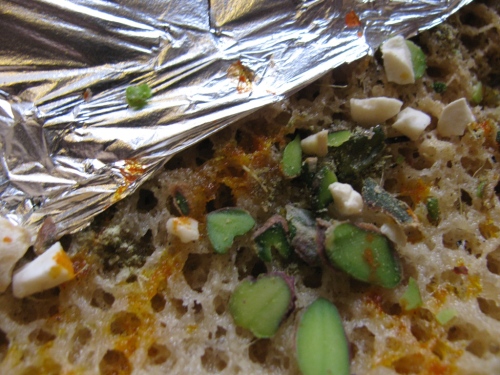
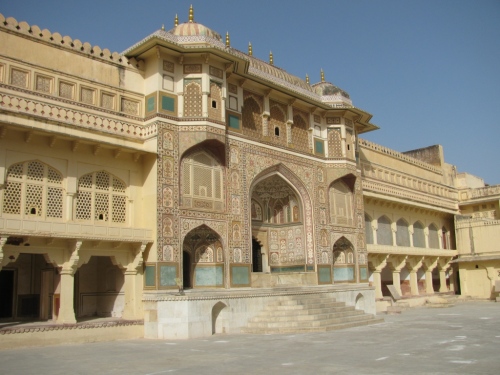

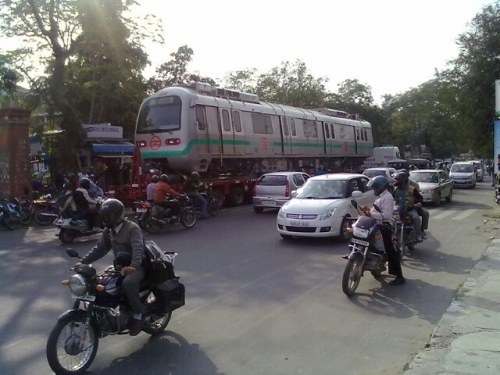
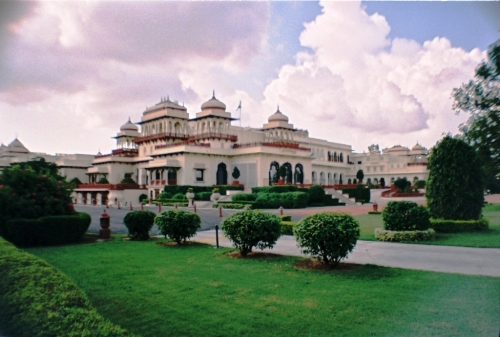























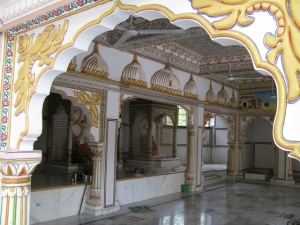












![Reblog this post [with Zemanta]](https://i0.wp.com/img.zemanta.com/reblog_b.png)





























